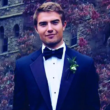Pedro Vaz Paulo is an emerging figure whose contributions in the fields of art, culture, and social discourse are beginning to captivate a global audience. Known for his unique perspective and approach, Vaz Paulo blends traditional techniques with contemporary narratives to create work that challenges, inspires, and provokes thought. Though his career is still unfolding, his influence is already becoming evident, as his projects resonate with both the public and critics alike. This article explores the life, career, and impact of Pedro Vaz Paulo, examining how his background and creative vision have shaped his journey so far.
Early Life and Background
Pedro Vaz Paulo was born into a family that nurtured creativity and intellectual curiosity. Raised in an environment where art and culture were highly valued, he developed an early interest in the visual arts. His formative years were filled with exposure to a wide variety of artistic expressions, ranging from classical European art to indigenous traditions and modern, avant-garde movements. These early influences laid the foundation for his future explorations, as he learned to appreciate the interplay between history, identity, and creativity.
While Vaz Paulo’s family played an important role in shaping his artistic sensibilities, his academic journey also contributed to his development. He pursued studies in both art and philosophy, two disciplines that would later converge in his work. His formal education allowed him to delve deeper into the theoretical aspects of art, exploring concepts such as representation, identity, and social responsibility. This dual focus on creative practice and intellectual inquiry became a hallmark of his career, setting him apart from other contemporary artists.
Artistic Style and Influences
Pedro Vaz Paulo’s work is characterized by a fusion of traditional craftsmanship with contemporary themes. His pieces often blend classical techniques, such as painting and sculpture, with modern digital tools and multimedia installations. This combination allows him to explore complex ideas and create immersive experiences that invite viewers to engage on multiple levels.
One of Vaz Paulo’s key influences is the intersection of culture and identity. His work frequently addresses issues of globalization, migration, and the ways in which cultural heritage is both preserved and transformed in a rapidly changing world. Drawing from his own experiences and those of others, he creates pieces that speak to the universal human experience while also reflecting specific cultural contexts.
Nature is another central theme in Vaz Paulo’s work. He often uses natural elements—such as wood, stone, and earth—in his sculptures and installations, symbolizing the connection between humanity and the environment. These works serve as meditations on sustainability, ecological responsibility, and the role of art in fostering a deeper awareness of the natural world.
Career Milestones
Pedro Vaz Paulo’s career began with small exhibitions and local projects, but it wasn’t long before his talent and vision garnered wider recognition. One of his early breakthroughs came when he participated in a collaborative project that highlighted the impact of urbanization on cultural heritage. This project, which involved a series of public art installations in various cities, received critical acclaim and positioned Vaz Paulo as a rising voice in the contemporary art scene.
As his reputation grew, Vaz Paulo began to receive invitations to exhibit his work in major galleries and cultural institutions. His solo exhibitions often revolve around themes of identity, memory, and transformation, offering viewers a contemplative experience that challenges conventional narratives. In addition to his gallery work, Vaz Paulo has been involved in several large-scale public art projects, further expanding his reach and influence.
In recent years, Vaz Paulo has also ventured into the world of digital art, exploring the possibilities of virtual reality (VR) and augmented reality (AR) in his work. These technological innovations have allowed him to create interactive pieces that engage viewers in new and dynamic ways, pushing the boundaries of traditional art forms and inviting audiences to become active participants in the creative process.
Social Impact and Philosophy
Beyond his artistic achievements, Pedro Vaz Paulo is deeply committed to using his work as a platform for social change. He believes that art has the power to inspire dialogue, raise awareness, and challenge entrenched systems of power and inequality. Much of his work is infused with this sense of responsibility, as he seeks to address pressing global issues such as environmental degradation, social justice, and cultural preservation.
One of the core principles guiding Vaz Paulo’s practice is the idea of interconnectedness. He views art not as a solitary pursuit but as a collaborative endeavor that bridges divides between people, communities, and even species. His projects often involve partnerships with other artists, activists, and community organizations, creating spaces for dialogue and shared action.
In addition to his artistic practice, Vaz Paulo is an advocate for arts education. He regularly conducts workshops and lectures aimed at empowering young artists and encouraging them to explore their own creative voices. His work in this area reflects his belief that art is not just a means of self-expression but a tool for fostering empathy, understanding, and collective growth.
Conclusion
Pedro Vaz Paulo is a visionary artist whose work bridges the past and present, the local and global, the personal and universal. His commitment to using art as a tool for social change, coupled with his innovative approach to blending traditional and modern techniques, sets him apart as one of the most exciting artists of his generation. As he continues to explore new creative frontiers, Vaz Paulo remains a powerful voice in the world of contemporary art, inspiring audiences to rethink their relationship with culture, nature, and each other.








